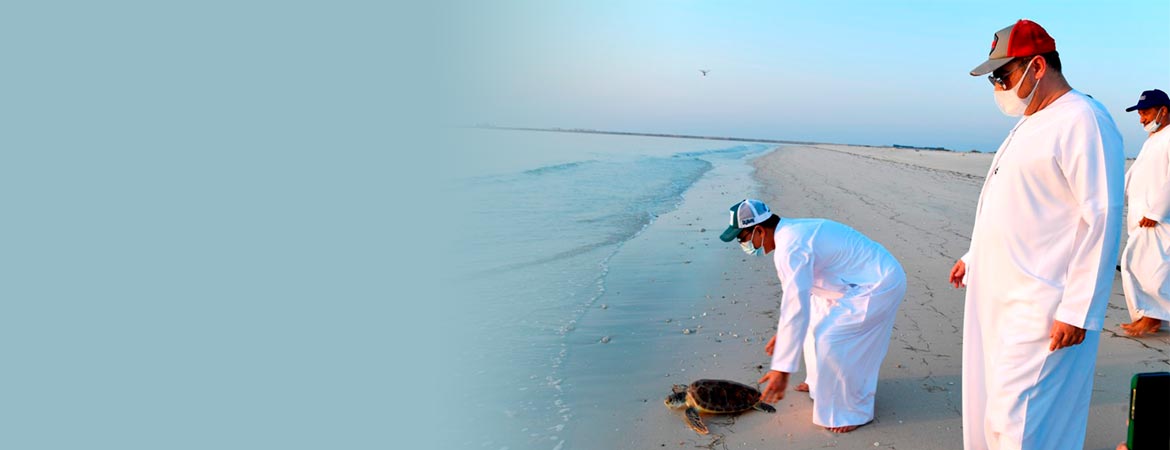In cooperation with Burj Al Arab Turtle Rehabilitation Centre and the Emirates Marine Environmental Group (EMEG), Dubai Municipality has organised an event to release seven green turtles and 11 Hawkbeak turtles, in the presence of Dawoud Al Hajri, Director General of Dubai Municipality and Ali Saqr Al Suwaidi, President of EMEG, and the concerned officials in the Municipality. A total of 52 small turtles have been released that were recently hatched from their nests in Jebel Ali Wildlife Sanctuary.
There are two types of turtles in the reserve that are threatened with extinction and categorised in the Red List, according to the classification of the International Union for Conservation of Nature (IUCN). The first species is Chelonas mydas, which depends on the diversity of natural habitats for food, and the second type is Eretmochelys imbricate. Jebel Ali Reserve is the only beach area in the Arabian Gulf where these turtles lay their eggs, while all other nesting areas are on the islands.
Sea turtles are considered an indicator of health of the ecosystem, and therefore Dubai Municipality arranged monitoring programs during the nesting season, and also developed a special program for satellite tracking, targeting raising a high level of knowledge of migration paths, patterns of movement throughout the year and their nutrition areas, contributing to the development of strategies to protect this species through cooperation with other parties at regional and local levels, in addition to developing legislation aimed at improving survival opportunities, including proposing new areas to preserve their feeding and reproduction.
The Eretmochelys imbricate turtles’ nesting season extends from March to June, during which its eggs are kept in sheds to protect them from predators such as Arabian foxes and seagulls. The average female adult lays eggs three times per season over a period of two weeks and lays about 80-120 eggs per nest, and eggs hatch after 55 to 60 days, and the number of nests to date has reached 41 nests in the current year 2020, which may increase in the coming days to reach more than 50 nests according to statistics of previous years, and a rich coral reef reserve provides an important plant for feeding these turtles during their migration season.
Comprehensive information about the Jebel Ali Wildlife Sanctuary
Jebel Ali Wildlife Sanctuary with a total area of 77 square kilometers was announced in 1998 in accordance with Local Order No. 2. The coastal area of the reserve is certified in the Ramsar Convention on Wetlands of International Importance, and it was officially announced in 2018. The reserve has many characteristics that made it eligible for inclusion on the List of Wetlands of International Importance, including: the reserve is located within one of the marine sites of biological importance identified in accordance with the ‘Ecologically and Biologically Significant Areas’. It also contains many natural habitats for the Arabian Gulf environment, such as coral reefs, mangroves, beach lakes, seaweed and pearl oysters. Jebel Ali Wildlife Sanctuary provides sanctuary for about 539 species of marine life and plants, and about 34 of corals have been registered; 40% of them are threatened with extinction and some of them are endemic species. Dugongs and Indo-Pacific humpbacks are endangered species registered in the reserve. The reserve is also considered a suitable area for the reproduction of many types of fish, such as the Hamin Epinephelus coioides, the Arabian carpet shark, the black-tipped reef shark and the Whale Shark, all of these species are threatened with extinction according to IUCN. The hawksbill turtle nesting season extends from March to June, when its eggs are kept in enclosures to protect them from predators such as foxes and seagulls.
